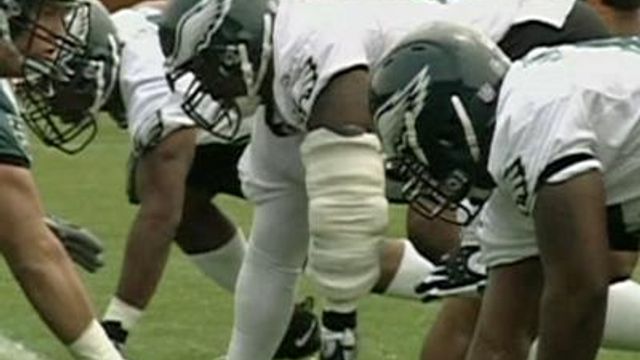Supersized pro football players prone to high blood pressure
The size of pro football players has increased over the last 20 years, which may place them at greater risk of heart disease.
Posted — UpdatedMore than 4 million children between ages 6 and 17 play tackle, touch or flag football. More than a few of them aspire to wear an NFL uniform. However, the size of pro football players has increased over the last 20 years, which may place them at greater risk of heart disease.
At 6 foot 3 inches, and weighing 310 pounds, Baltimore Ravens Justin Bannan is bigger and better.
“All football players are getting bigger across all positions, but the most dramatic changes over the last 20 years or so have been related to linemen,” said Dr. Andrew Tucker, Ravens head physician.
But as players increase in size, they are also increasing their health risk. As part of an NFL committee on cardiovascular health, researchers assessed the cardiovascular risk factors in over 500 active players.
The debate is over the effect of size versus the effect of activity. The study, published in the Journal of the American Medical Association, compared American men of similar age.
NFL players had a higher incidence of high blood pressure, but less reported smoking. They also had a lower prevalence of pre-diabetes and similar blood cholesterol levels.
That is important for current players and future prospects to remember.
“I don't think you are going to train exactly like you are now when you're retired. So I think you're really going to have to make some lifestyle changes,” Bannan said.
As a result of this study, research is under way exploring potential causes of high blood pressure in NFL players, from greater use of anti-inflammatory medications.
• Credits
Copyright 2024 JAMA. All rights reserved.





